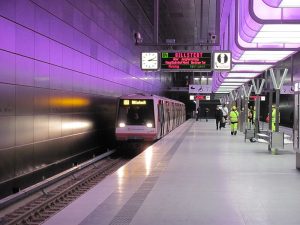 Alstom’s Hesop energy converter entered commercial service on Hamburg U2 line, being installed in the Rauhes Haus station. The energy recovery system which captures trains’ braking energy and redirects it.
Alstom’s Hesop energy converter entered commercial service on Hamburg U2 line, being installed in the Rauhes Haus station. The energy recovery system which captures trains’ braking energy and redirects it.
The system is capturing 99% of the braking energy, and it redirects it for use within the passenger station and returns any excess to the grid. Hesop converts and transfers any unused power, generated by trains during braking, to the medium voltage grid for re-use within the network.
This is Germany’s first such system and the first instance of Hesop being provided as a standalone product operating in full conversion mode.
“Hesop is one of our responses to operators’ need for increased energy efficiency. We are proud to have introduced the system to Germany. It is an important element of the clean, efficient public transportation of the future, offering unique economic and environmental benefits,” said Jörg Nikutta, Managing Director of Alstom in Germany and Austria.
Hesop energy converter provides an innovative solution to the increasing energy demands of public transport while making the overall system more sustainable. Hesop is an advanced reversible power substation which both supplies traction voltage to a network and recovers braking energy from vehicles.
The project is part of a letter-of-intent signed in 2018 by Alstom and city’s transport company, Hamburger Hochbahn which envisages Hesop tests on Hamburg metro system. The system is developed and manufactured at Alstom’s site of Charleroi in Belgium, while the site of Saint-Ouen in France is responsible for the system design.
The flexibility and varied product packages, the system meet the unique requirements of individual operators. Being configured in a wide range of voltage and power versions, 125 Hesop units were installed or ordered for metro systems in Milan, Riyadh, London, Dubai and Panama and tramway systems in Sydney and Milan.
Share on:



